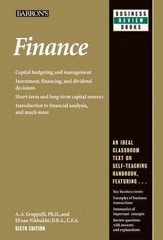Question
Treasury bills are paying a 3% rate of return. A risk-averse investor with a risk aversion of A =3.5 will choose to invest 55% in
Treasury bills are paying a 3% rate of return. A risk-averse investor with a risk aversion of A =3.5 will choose to invest 55% in the optimal risky portfolio with a standard deviation of 24% only if the optimal risky portfolio's expected return is at least _____ %. ( Round your answer to two decimal places)
The following stock fund and bond fund have a correlation coefficient= 0.05 and the risk-free rate is 4%.
| Asset | Expected return | Standard deviation |
| Stock fund | 12% | 30% |
| Bond fund | 8% | 25% |
What is the expected return on the optimal risky portfolio created by the two funds ?
______ % (rounded to two decimal places )
Suppose that many stocks are traded in the market and that it is possible to borrow at the risk-free rate, r. The characteristics of two of the stocks are as follows:
| Stock | Expected Return | Standard Deviation | ||||
| A | 7 | % | 30 | % | ||
| B | 14 | % | 70 | % | ||
| Correlation = 1 | ||||||
|
| ||||||
a. What is the expected rate of return on the minimum-variance portfolio comprised of the two stocks? (Round your answer to 2 decimal places.)
b. What is the estimated standard deviation of the minimum variance portfolio?
multiple choice
-
0
-
between 30 % and 70%
-
30 %
-
70 %
Step by Step Solution
There are 3 Steps involved in it
Step: 1

Get Instant Access to Expert-Tailored Solutions
See step-by-step solutions with expert insights and AI powered tools for academic success
Step: 2

Step: 3

Ace Your Homework with AI
Get the answers you need in no time with our AI-driven, step-by-step assistance
Get Started


